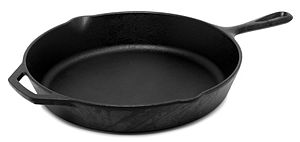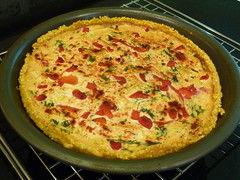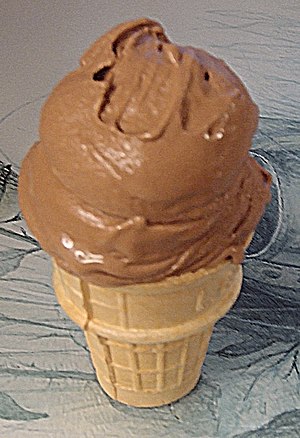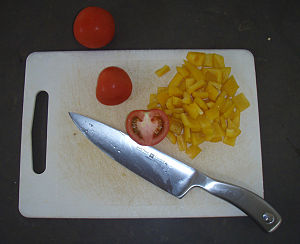 Image via Wikipedia1. Don't panic if it's not as nonstick as you'd like at first. Lodge
Image via Wikipedia1. Don't panic if it's not as nonstick as you'd like at first. Lodge2. Clean the pan while it's still hot, and DON'T use soap. I let it cool for about 5 minutes after using, then run hot water into it, and scrub with a plastic scrubber. It should usually clean up very easily if you clean it right away after using. Rinse well with hot water, and wipe with a towel or paper towel, until it looks dry. Then set on the stovetop and let dry for 10-15 minutes before storing. Because the pan is still hot, it will evaporate away any remaining moisture. (If the handle is too hot to hold while washing, use an Ove' Glove
3. Beware of rust! Rust is the enemy of the cast iron pan, and it can be sneaky. This is another reason why it's important to wash the pan while it's still hot. if you forget, or don't get to it 'til it's cold, be sure to wash with hot water, and after wiping with a towel to remove any visible droplets, set on a stove burner on low heat for several minutes to make sure it dries completed. Also store the pan where it won't get wet.
 Image via WikipediaWhen I first got mine, since the large one stays on the stovetop, it kept getting drops of water in it from other cooking endeavors, and I was always having to wipe it out or it would sometimes start to develop rust spots. I've since solved this problem by keeping a lid over it (once it's fully dry), but it's something to be aware of.
Image via WikipediaWhen I first got mine, since the large one stays on the stovetop, it kept getting drops of water in it from other cooking endeavors, and I was always having to wipe it out or it would sometimes start to develop rust spots. I've since solved this problem by keeping a lid over it (once it's fully dry), but it's something to be aware of.4. I don't know if this is a hard and fast rule, but based on my knowledge of other non-stick pans, I also try not to use metallic utensils in mine - I try to stick with plastic or wood - although occasionally I've (carefully) used a metal spatula for pancakes.
If you follow these tips, your cast iron cookware will probably become your favorite cookware, as mine has, and it can literally last you an entire lifetime (maybe even more) if properly cared for - all for a ridiculously cheap investment, compared to a lot of other cookware out there.
Try it - start with one skillet if you want to test it out - and see if you love it as much as I do!
For more of my favorite cookware and cooking utensils, visit http://www.newholisticliving.com/cookingfromscratch.html.





































